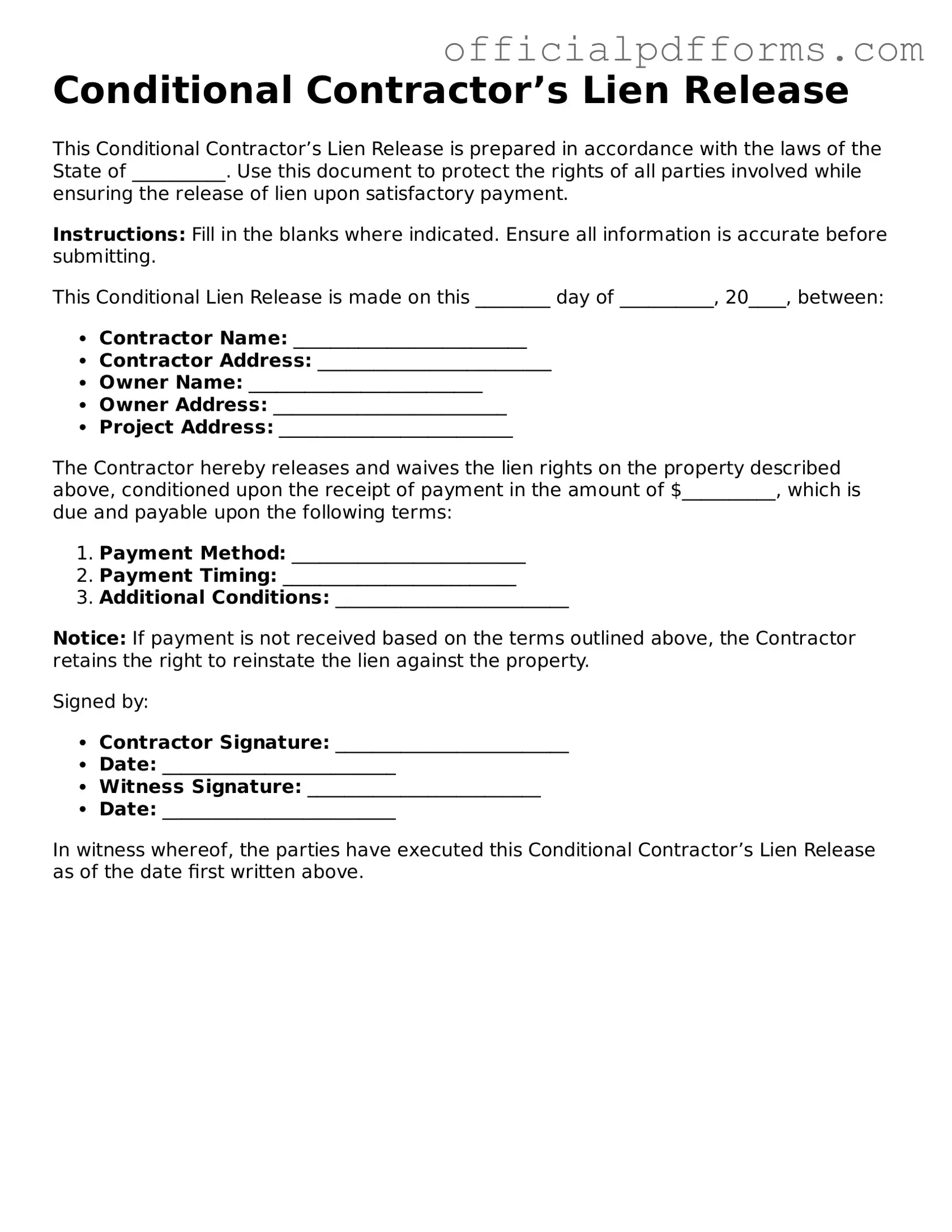A Conditional Contractor’s Lien Release form is a legal document used by contractors to relinquish their right to file a lien on a property, contingent upon receiving payment. This means that the contractor agrees to release their claim to the property as long as the agreed payment is made. It provides assurance to property owners that they will not face a lien as long as they fulfill their payment obligations.
This form should be used when a contractor is about to receive payment for work completed or materials supplied. It is particularly useful in situations where the contractor wants to assure the property owner that they will not file a lien, provided that payment is made. It is often used in construction projects, renovations, or any work that involves property improvement.
Using this form has several benefits:
-
Protection for Property Owners:
It provides peace of mind to property owners by ensuring that they will not face a lien on their property if they make the payment.
-
Clear Communication:
It establishes clear communication between the contractor and the property owner regarding payment terms and lien rights.
-
Legal Compliance:
It helps both parties comply with state laws regarding lien releases and payments in construction contracts.
Yes, the Conditional Contractor’s Lien Release form is legally binding once it is signed by both the contractor and the property owner. It represents an agreement between the two parties regarding the release of lien rights, contingent upon payment. However, it is essential that both parties understand the terms before signing to avoid any disputes later on.
The Conditional Contractor’s Lien Release form usually includes the following information:
-
The names and addresses of the contractor and property owner.
-
A description of the property where the work was performed.
-
The amount of payment being made.
-
A statement indicating that the release is conditional upon payment being received.
-
The date of the release and signatures of both parties.
Once signed and delivered, a Conditional Contractor’s Lien Release form generally cannot be revoked, as it is a binding agreement. However, if the payment is not made as agreed, the contractor may still have the right to file a lien. Therefore, it is crucial for contractors to ensure that payment is received before releasing their lien rights.
How does a Conditional Contractor’s Lien Release differ from an Unconditional Lien Release?
The primary difference lies in the conditions attached to the release. A Conditional Contractor’s Lien Release is contingent upon payment being made, while an Unconditional Lien Release is effective immediately, regardless of whether payment has been received. The unconditional release provides complete assurance to the property owner that the contractor will not file a lien, regardless of payment status.
